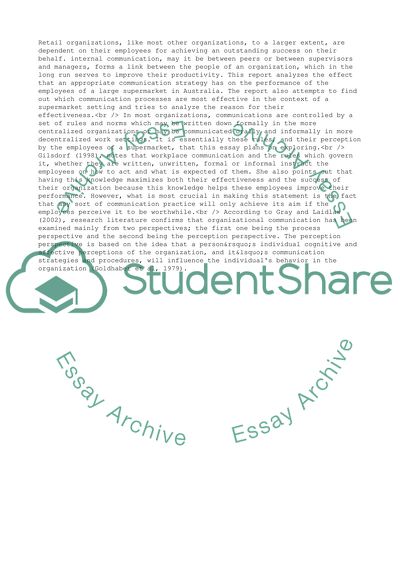Cite this document
(Workplace Communication in Coles Supermarket Case Study, n.d.)
Workplace Communication in Coles Supermarket Case Study. Retrieved from https://studentshare.org/management/1564824-communication-writing-and-professional-practice-the-report-of-workplace-communication-in-a-large-supermarket
Workplace Communication in Coles Supermarket Case Study. Retrieved from https://studentshare.org/management/1564824-communication-writing-and-professional-practice-the-report-of-workplace-communication-in-a-large-supermarket
(Workplace Communication in Coles Supermarket Case Study)
Workplace Communication in Coles Supermarket Case Study. https://studentshare.org/management/1564824-communication-writing-and-professional-practice-the-report-of-workplace-communication-in-a-large-supermarket.
Workplace Communication in Coles Supermarket Case Study. https://studentshare.org/management/1564824-communication-writing-and-professional-practice-the-report-of-workplace-communication-in-a-large-supermarket.
“Workplace Communication in Coles Supermarket Case Study”, n.d. https://studentshare.org/management/1564824-communication-writing-and-professional-practice-the-report-of-workplace-communication-in-a-large-supermarket.


